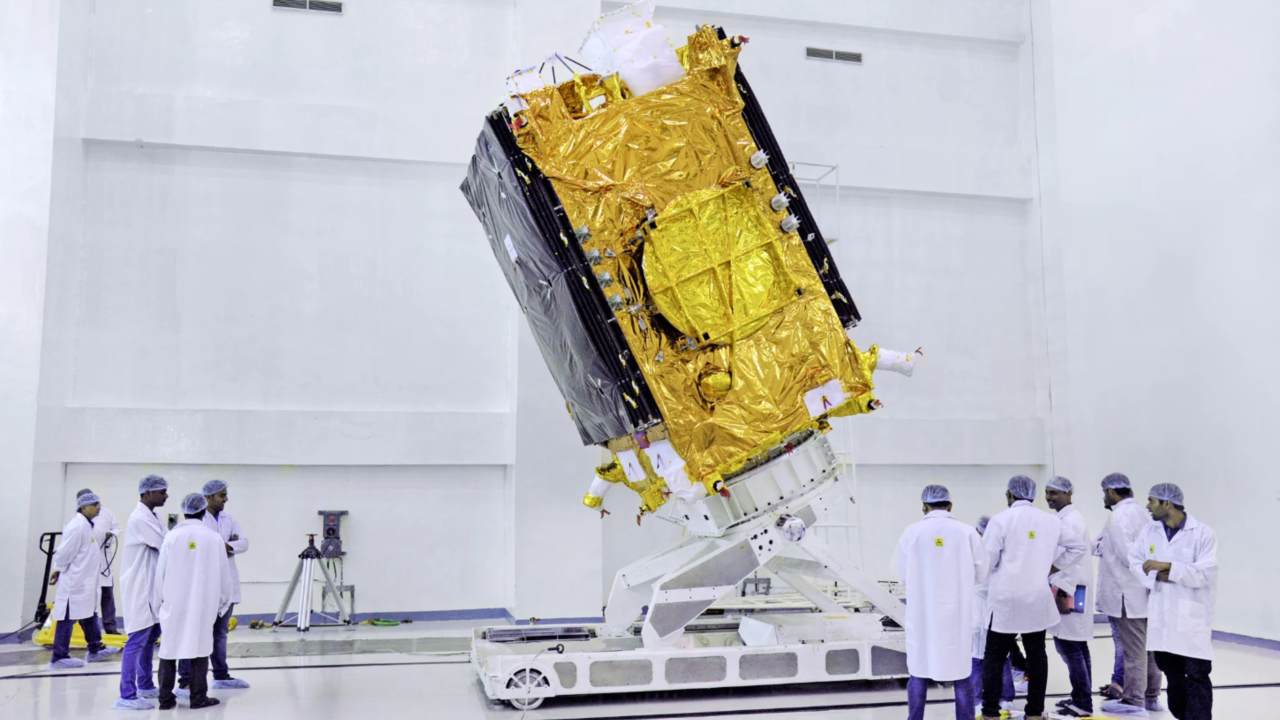ISRO has chalked out hectic plans ahead of the new year with the space agency lining up 10 missions before January 2019, the space agency’s chief K Sivan said Wednesday. Following the missions, Sivan said, in January next, ISRO would launch the Chandrayaan-II mission (lunar lander) which will be the first operational mission of the GSLV-Mk III-vehicle. Addressing reporters after the successful launch of the second developmental flight GSLV-MkIII-D2 carrying communication satellite GSAT-29, he said, “we have to achieve 10 missions before January.” “That is six satellite missions as well as four launch vehicle missions. Definitely, the task in front of us is very huge,” he said. [caption id=“attachment_5554321” align=“alignnone” width=“1280”] ISRO Chairman K Shivan addressing the press in New Delhi on 28 August, 2018. Image courtesy: Deparment of Space[/caption] According to him, after Wednesday’s flight, the heaviest launcher of India has completed its development flights and is entering into the operational group of launchers of ISRO, that is along with the PSLV (polar satellite launch vehicle) and GSLV. GSAT-29 satellite carries important payloads in Ka and Ku band and it is going to serve the remote places of India especially Jammu and Kashmir as well as North East under the ‘Digital India’ programme, Sivan said. Apart from the Ku band communication payload, he said, the satellite also has optical communication payload as well as a high-resolution camera. [caption id=“attachment_5535361” align=“alignnone” width=“1280”]
 The GSAT-29 satellite being positioned for transport to ISRO’s Sriharikota launchpad. Image courtesy: ISRO[/caption] “These advanced payloads is really going to make a technological breakthrough in the GSAT satellite series in future,” he said. According to ISRO scientists, the Master Control Facility at Hassan has assumed control of the GSAT-29 satellite. “In the coming days, three orbit-raising manoeuvres will be executed to position the satellite in geostationary orbit at its designated location,” an official said. While the Geo high-resolution camera will carry out high-resolution imaging, the optical communication payload will demonstrate data transmission at a very high rate through optical communication link, he said. GSAT-29 project director K Pankaj Damodar said that the launch will help bridge the “digital divide” in India.
The GSAT-29 satellite being positioned for transport to ISRO’s Sriharikota launchpad. Image courtesy: ISRO[/caption] “These advanced payloads is really going to make a technological breakthrough in the GSAT satellite series in future,” he said. According to ISRO scientists, the Master Control Facility at Hassan has assumed control of the GSAT-29 satellite. “In the coming days, three orbit-raising manoeuvres will be executed to position the satellite in geostationary orbit at its designated location,” an official said. While the Geo high-resolution camera will carry out high-resolution imaging, the optical communication payload will demonstrate data transmission at a very high rate through optical communication link, he said. GSAT-29 project director K Pankaj Damodar said that the launch will help bridge the “digital divide” in India.
6 satellite- & 4 launch vehicle-missions… definitely, the task in front of us is very huge: Sivan.
Advertisement
End of Article


)
)
)
)
)
)
)
)
)



